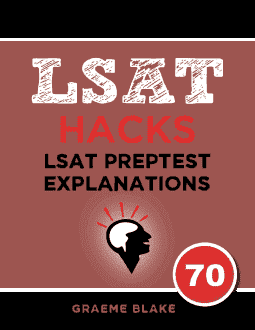Open-ended “must be false” and “must be true” questions can be among the hardest logic games questions.
Sometimes you have a flash of insight and you can get the answer right away. Other times you have no choice but to try every answer, using trial and error.
I’m going to try to help you get that flash of insight. The key is to look at the answers and see what rules they relate to. Here the answers place G and H. Let’s see what rules relate to G and H:
- There are three Gs. Therefore there are two Hs.
- A G is first
- An H is fourth.
The right answer will violate one of these rules. None of the answers violate the rules about putting G first or H fourth. So the right answer almost certainly violates the first rule: there are three Gs and two Hs.
Let’s look at the answers that mention H, because H is the more restricted variable. One of the two Hs is already fourth, thanks to rule two. So only one of the other lectures can take place in H.
B puts H in second and third. We also know H is fourth. That’s three Hs, which is too many, so B is CORRECT.
D places two Hs, but one of them is fourth. Since there was already an H fourth, this answer only requires two Hs total. So D is possible.
There’s basically no way for A, C or E to violate a rule. Three lectures take place at G, so there’s no way for an answer to place too many Gs.
I hope this helps you see that there’s usually a method that you can apply to quickly solve “must be false” questions. The right answer was simply based on combining two rules: rule 2 and rule 3.


Leave a Reply